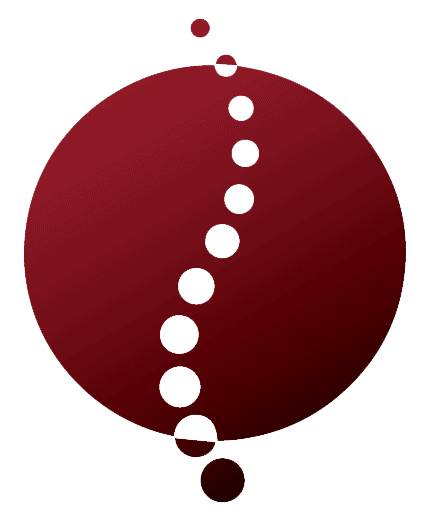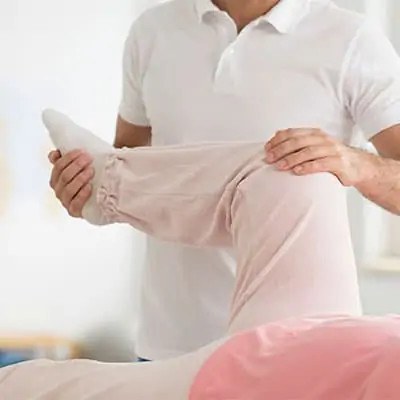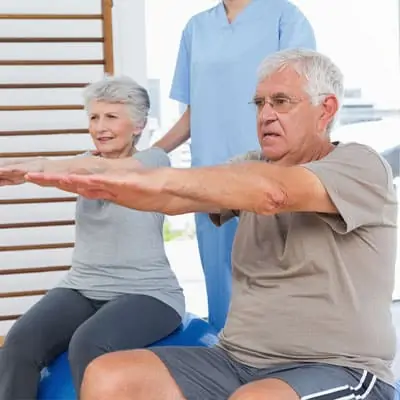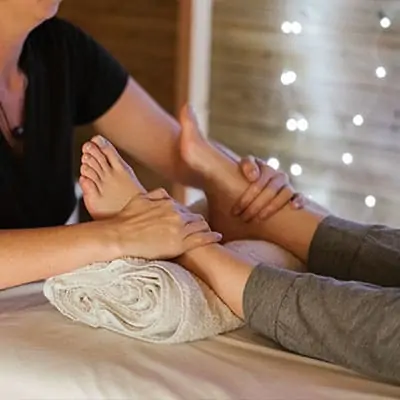Understanding Scoliosis
What is Scoliosis?
Scoliosis is a medical condition where the spine curves sideways. This curvature can take on an “S” or “C” shape, often causing discomfort and physical limitations. Scoliosis can be mild to severe, with severe cases sometimes requiring intervention to prevent worsening. To learn more about the different types of scoliosis, visit our article on scoliosis types.
| Severity of Curvature | Degree of Curve |
|---|---|
| Mild | 10-25° |
| Moderate | 25-40° |
| Severe | 40°+ |
Causes and Symptoms of Scoliosis
The causes of scoliosis can vary, and in many cases, the exact reason remains unknown. However, common causes include genetic factors, neuromuscular conditions, and congenital disabilities. It’s essential to recognize the symptoms early to seek appropriate treatment.
Common symptoms of scoliosis include:
- Uneven shoulders or waist
- One hip higher than the other
- Prominent ribs on one side
- Back pain and stiffness
For a more in-depth look at the causes and symptoms, refer to our article on scoliosis causes and scoliosis symptoms.
Importance of Seeking Treatment
Seeking treatment for scoliosis is crucial, especially if the curvature is progressing. Early diagnosis and intervention can prevent the condition from worsening and reduce the need for invasive procedures. Treatments can range from observation and physical therapy to bracing and, in severe cases, surgery.
Ignoring scoliosis can lead to complications such as chronic pain, respiratory issues, and reduced quality of life. Consulting with a healthcare provider for a scoliosis diagnosis and exploring scoliosis treatment options is vital for effective management.
Understanding scoliosis and its implications can empower you to take proactive steps in managing the condition. Explore our resources on scoliosis management and scoliosis prevention for comprehensive guidance.
Natural Remedies for Scoliosis
If you’re searching for non-invasive treatments to manage scoliosis, several natural remedies can help alleviate discomfort and improve your quality of life. These remedies include exercise, yoga, stretching, and massage therapy.
Exercise and Physical Therapy
Exercise and physical therapy play a crucial role in managing scoliosis. Specific exercises can help strengthen the muscles supporting your spine, improve posture, and reduce pain. Engaging in a tailored exercise program can lead to significant improvements.
| Exercise Type | Benefits |
|---|---|
| Core Strengthening | Enhances spinal support |
| Stretching | Improves flexibility |
| Cardiovascular Exercise | Boosts overall health |
| Resistance Training | Builds muscle strength |
For a comprehensive guide, consider exploring our article on scoliosis exercises.
Yoga and Stretching
Yoga and stretching exercises are beneficial for those with scoliosis as they promote flexibility, balance, and muscle strength. Specific yoga poses can target the spine and surrounding muscles, providing relief from pain and discomfort.
| Yoga Pose | Benefits |
|---|---|
| Cat-Cow Stretch | Increases spinal flexibility |
| Child’s Pose | Relieves tension in the back |
| Triangle Pose | Strengthens core muscles |
| Downward Dog | Stretches the spine and hamstrings |
Incorporating these poses into your routine can help manage scoliosis symptoms. For more on how yoga can benefit scoliosis, read our article on scoliosis alternative treatments.
Massage Therapy
Massage therapy is another effective natural remedy for scoliosis. Regular massages can help reduce muscle tension, improve circulation, and alleviate pain. Various massage techniques can be used to target specific areas affected by scoliosis.
| Massage Technique | Benefits |
|---|---|
| Deep Tissue Massage | Relieves deep muscle tension |
| Swedish Massage | Enhances relaxation and circulation |
| Trigger Point Therapy | Reduces localized pain |
| Myofascial Release | Improves mobility and flexibility |
To learn more about how massage therapy can benefit scoliosis, visit our article on scoliosis massage therapy.
By integrating these natural remedies into your daily routine, you can effectively manage scoliosis and improve your overall well-being. Remember to consult with a healthcare provider before starting any new treatment plan to ensure it is safe and suitable for your condition.
Dietary Approaches
When managing scoliosis, incorporating specific dietary approaches can support overall health and potentially alleviate some symptoms. This section will discuss an anti-inflammatory diet, supplements for bone health, and the importance of hydration and nutrition.
Anti-Inflammatory Diet
An anti-inflammatory diet can help reduce inflammation in the body, which may relieve some discomfort associated with scoliosis. This diet emphasizes consuming foods rich in antioxidants, omega-3 fatty acids, and essential nutrients.
Foods to Include:
- Fruits and vegetables
- Whole grains
- Nuts and seeds
- Fatty fish (e.g., salmon, mackerel)
- Olive oil
Foods to Avoid:
- Processed foods
- Sugary snacks
- Red meat
- Trans fats
| Food Group | Example Foods | Benefits |
|---|---|---|
| Fruits & Vegetables | Berries, leafy greens | High in antioxidants |
| Whole Grains | Brown rice, quinoa | Rich in fiber |
| Nuts & Seeds | Almonds, flaxseeds | Good source of omega-3 |
| Fatty Fish | Salmon, mackerel | Contains omega-3 fatty acids |
| Olive Oil | Extra virgin olive oil | Anti-inflammatory properties |
Supplements for Bone Health
Maintaining bone health is crucial for individuals with scoliosis. Certain supplements can support bone density and overall skeletal health.
Key Supplements:
- Calcium: Essential for bone formation and maintenance.
- Vitamin D: Aids in calcium absorption and bone growth.
- Magnesium: Supports bone structure and helps in calcium metabolism.
- Vitamin K: Plays a role in bone mineralization.
| Supplement | Recommended Daily Intake | Benefits |
|---|---|---|
| Calcium | 1000 mg | Strengthens bones |
| Vitamin D | 600 IU | Enhances calcium absorption |
| Magnesium | 320 mg (women), 420 mg (men) | Supports bone structure |
| Vitamin K | 90 mcg (women), 120 mcg (men) | Aids in bone mineralization |
Hydration and Nutrition
Staying hydrated and maintaining a balanced diet is vital for overall health and can aid in managing scoliosis symptoms. Proper hydration helps maintain joint and muscle function, which is essential for those dealing with spinal issues.
Hydration Tips:
- Drink at least 8 glasses of water a day.
- Include hydrating foods like cucumbers, watermelon, and oranges.
Nutritional Guidelines:
- Eat a balanced diet with a variety of nutrients.
- Avoid excessive caffeine and alcohol, as they can dehydrate the body.
For more information on maintaining a healthy diet for scoliosis, visit our article on scoliosis nutrition.
Incorporating these dietary approaches can complement other natural remedies for scoliosis. Always consult with a healthcare provider before making significant changes to your diet or starting new supplements. For additional guidance, explore our section on scoliosis alternative treatments.
Mind-Body Techniques
In managing scoliosis, mind-body techniques can play a significant role in alleviating discomfort and promoting overall well-being. These methods encompass practices like meditation, mindfulness, breathing exercises, and stress management.
Meditation and Mindfulness
Meditation and mindfulness are powerful tools for managing the pain and stress associated with scoliosis. By focusing your mind and practicing mindfulness, you can reduce the perception of pain and improve your emotional resilience.
Research suggests that regular meditation can help decrease chronic pain and improve mental health. Simple techniques like mindfulness meditation, which involves focusing on your breath and being present in the moment, can be particularly effective.
| Benefits of Meditation and Mindfulness |
|---|
| Reduces pain perception |
| Lowers stress levels |
| Improves emotional resilience |
| Enhances overall well-being |
For more information on managing scoliosis pain, visit our article on scoliosis pain.
Breathing Exercises
Breathing exercises can be an excellent way to manage scoliosis-related discomfort. These exercises help increase lung capacity, reduce tension, and improve posture. Practicing deep, diaphragmatic breathing can also promote relaxation and decrease stress.
One effective breathing exercise is the 4-7-8 technique:
- Inhale through your nose for 4 seconds.
- Hold your breath for 7 seconds.
- Exhale through your mouth for 8 seconds.
Regular practice of this technique can help manage pain and improve overall lung function. For additional exercises tailored to scoliosis, check out our article on scoliosis exercises.
Stress Management
Stress can exacerbate scoliosis symptoms, making it crucial to incorporate stress management techniques into your daily routine. Effective stress management can improve your quality of life and reduce the physical impact of scoliosis.
Some effective stress management techniques include:
- Exercise: Physical activity releases endorphins, which help reduce stress.
- Hobbies: Engaging in activities you enjoy can distract from pain and reduce stress.
- Social Support: Connecting with friends, family, or support groups can provide emotional relief.
For personalized guidance, consider consulting with a healthcare provider or exploring resources like support groups. Learn more about managing scoliosis with professional assistance in our article on scoliosis management.
By incorporating these mind-body techniques into your daily routine, you can effectively manage scoliosis symptoms and enhance your overall well-being.
Lifestyle Adjustments
Making lifestyle adjustments can significantly improve the quality of life for individuals with scoliosis. This section focuses on posture correction, ergonomic modifications, and sleep position and support.
Posture Correction
Maintaining proper posture is essential for managing scoliosis. Poor posture can exacerbate the curvature of the spine and lead to increased discomfort. Here are some tips for posture correction:
- Sit upright: Keep your back straight and shoulders relaxed. Use a chair with good lumbar support.
- Stand tall: Distribute your weight evenly on both feet. Avoid slouching or leaning to one side.
- Engage your core: Strengthening your core muscles can help support your spine. Incorporate exercises that target the abdominal and back muscles.
For more exercises that can help with posture correction, visit our article on scoliosis exercises.
Ergonomic Modifications
Ergonomic modifications can help reduce strain on your spine and improve comfort in your daily activities. Consider the following adjustments:
- Workstation setup: Ensure that your desk and chair are at the appropriate height. Your computer screen should be at eye level to avoid hunching.
- Footrest: Use a footrest to keep your feet flat on the floor, which can help maintain proper posture.
- Supportive furniture: Opt for furniture that provides adequate support for your spine.
| Ergonomic Modification | Benefit |
|---|---|
| Adjustable chair | Provides lumbar support |
| Footrest | Maintains proper posture |
| Standing desk | Reduces sitting time |
For more tips on ergonomic modifications, check out our article on scoliosis management.
Sleep Position and Support
Your sleep position and the type of support you use can have a significant impact on scoliosis pain. Here are some recommendations:
- Back sleeping: Sleeping on your back with a pillow under your knees can help maintain the natural curve of your spine.
- Side sleeping: If you prefer sleeping on your side, place a pillow between your knees to keep your spine aligned.
- Mattress choice: A medium-firm mattress provides the right balance of support and comfort for your spine.
| Sleep Position | Support |
|---|---|
| Back sleeping | Pillow under knees |
| Side sleeping | Pillow between knees |
| Stomach sleeping | Not recommended |
For more information on sleep positions and support, visit our article on scoliosis alternative treatments.
By incorporating these lifestyle adjustments into your daily routine, you can help alleviate scoliosis pain and improve overall spinal health.
Seeking Professional Guidance
When dealing with scoliosis, seeking professional guidance is crucial for effective management and relief. Consulting with healthcare providers, physical therapists, or chiropractors, and engaging with support groups can make a significant difference in your journey.
Consulting with a Healthcare Provider
Your first step should be to consult with a healthcare provider. A medical professional can diagnose the severity of your scoliosis through physical examinations and imaging tests. They will provide you with a tailored treatment plan that may include natural remedies, physical therapy, or other interventions. Understanding the scoliosis diagnosis process can help you prepare for your consultation.
Physical Therapist or Chiropractor
Physical therapists and chiropractors are essential in managing scoliosis through non-invasive methods. A physical therapist can design a specific exercise regimen to strengthen your core and improve posture. These exercises can help alleviate pain and enhance flexibility. Learn more about scoliosis physical therapy and scoliosis exercises for targeted routines.
Chiropractors can assist in spinal adjustments and manipulations to improve alignment and reduce discomfort. They often incorporate holistic approaches such as scoliosis massage therapy to provide relief from muscle tension.
Support Groups and Resources
Engaging with support groups and utilizing available resources can provide emotional and practical support. Support groups offer a platform where you can share experiences, gain insights, and receive encouragement from others facing similar challenges. These groups often provide valuable information on scoliosis management and coping strategies.
| Resource Type | Description |
|---|---|
| Support Groups | Online and in-person groups for sharing experiences |
| Educational Materials | Books, articles, and pamphlets on managing scoliosis |
| Community Resources | Local organizations and events focused on scoliosis awareness |
For more information on scoliosis awareness and connecting with support networks, consider seeking out local and online resources.
By seeking professional guidance, you can effectively manage scoliosis through a combination of medical advice, physical therapy, and community support.











